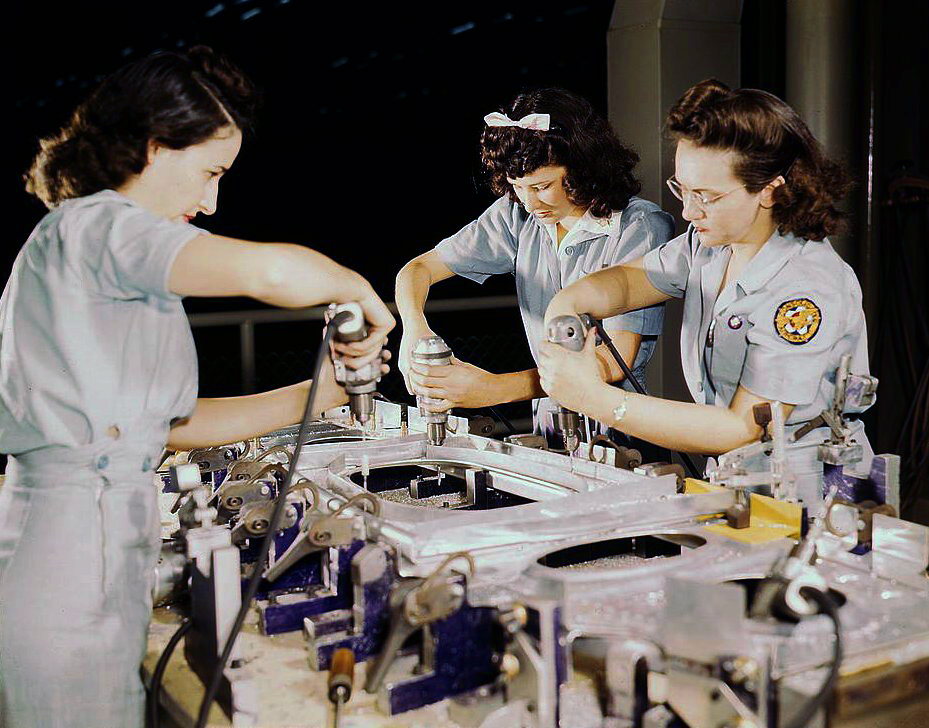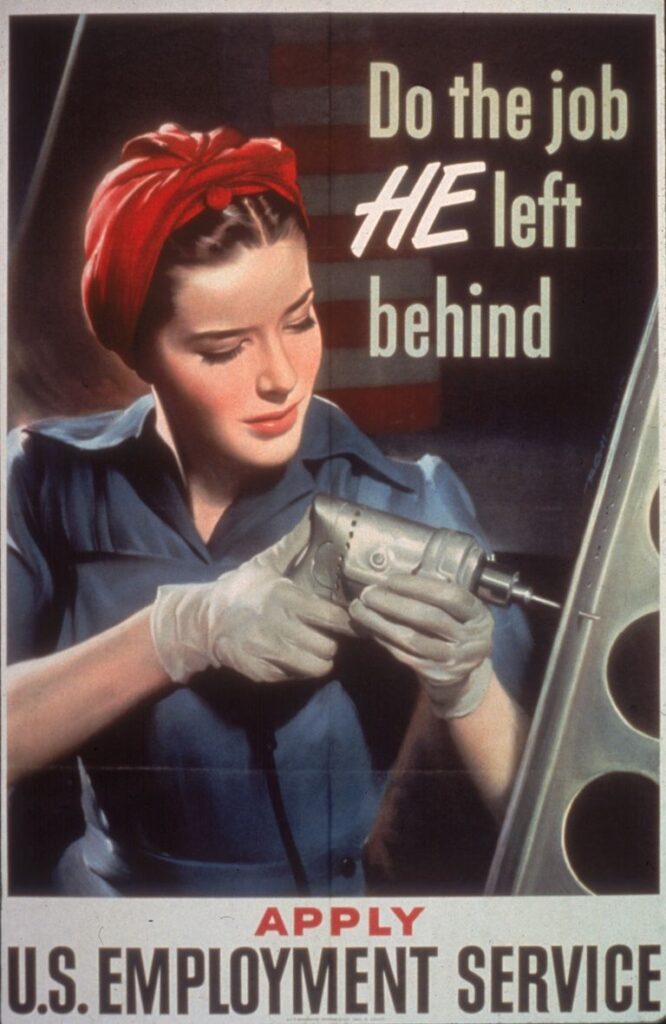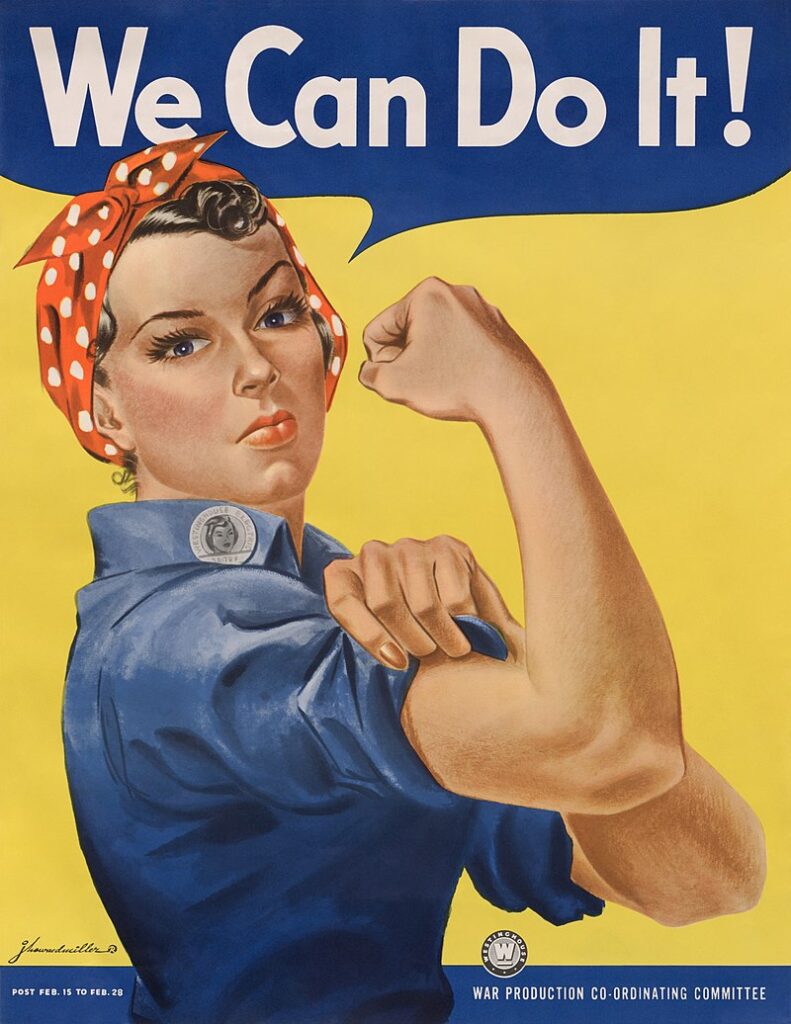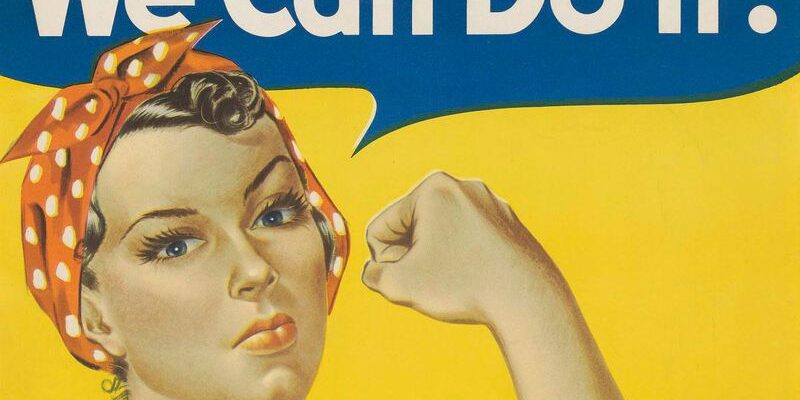Rosie the Riveter was the face of what became one of the most iconic images of working women in World War II. The image was part of a campaign that encouraged women to apply for jobs in the defense industries and proved to be one of the most successful recruitment tools in American History. As large-scale male enlistment resulted in a substantial gap in the industrial labor force, American women entered the workforce in vast numbers. Between 1940 and 1945, the percentage of female workers increased from 27 percent to almost 37 percent, and by 1945, close to one in four married women were employed.

Women in the Workforce
While women worked in a range of different professions during the second world war, the aviation industry saw the largest increase in female workers. In 1943, there were more than 310,000 women working in the aircraft industry, making up 65 percent of the entire aviation industry workforce. This is a massive increase from the pre-war years where women made up just one percent of the industry workforce.
As illustrated in the U.S. government’s Rosie the Riveter campaign, the munitions industry also heavily recruited workers. As the country’s need to expand the workforce grew, women began to fill positions that were traditionally filled by men. Women took jobs working heavy construction machinery, in steel and lumber mills, factories, as well as physical labor such as construction, unloading freight, making munitions and more.

During World War II, almost 19 million women held jobs. Most of these women were either returning to work after being made redundant following the depression or were already in lower paying positions. Only three million new female workers joined the workforce during the war period. Despite their crucial role in the war, women who entered the workforce during World War II rarely earned more than 50% the salary of their male counterparts.
The Rosie Riveter Campaign
Loosely based on a real-life munition’s worker, the strong bandanna-clad Rosie became a symbol of women’s involvement in the war, women’s independence and American feminism. Heavily distributed throughout newspapers, propaganda posters, movies, articles and photographs, the Rosie the Riveter campaign emphasized the patriotic need for women to enter to the workforce. The image was so powerful, rendering it the most effective recruitment campaign in the U.S. of all time.

In early 1943, the song “Rosie the Riveter” by Redd Evans and John Loeb was released. The song title was the first time that the term “Rosier the Riveter” was used and portrays Rosie as a tireless female war employee, doing her part in defending America by working on the home front. Following the success of the song, on May 29th, 1943, a cover image of Rosie the Riveter by artist Norman Rockwell was published by The Saturday Evening Post. The image depicted a muscular Rosie in front of an American flag with a copy of Adolf Hitler’s “Mein Kamp” below her feet. Despite being a well-known version of Rosie the Riveter, the original protype (although without the title “Rosie the Riveter” which was given later) was created by the artist J. Howard Miller in 1942 and was featured on a poster for Westinghouse Electric Corporation below the headline “We Can Do It!” That illustration became one of the most iconic images in American history and a poignant symbol of feminism worldwide.
Who Was Rosie the Riveter?
The real identity of Rosie the Riveter has been the subject of much debate. For many years, it was believed that the inspiration behind the woman in the Westinghouse poster was Geraldine Hoff Doyle, a Navy machine shop worker from Michigan. Other sources claim that Rosie was based on Rose Will Monroe who worked as a riveter at the Willow Run Bomber Plant.
However, the most credible claim on Rosie’s true identity came from Naomi Parker Fraley, who was photographed working in the machine shop at the Naval Air Station in Alameda, California. In the photo that was taken in 1942, Naomi is wearing a polka-dotted bandana, highly resembling the one worn by Rosie in the campaign.
The Impact of Rosie the Riveter
The government call for women to join the workforce during World War II was only supposed to be temporary and women were expected to leave their jobs after the war when the men would return. In 1944, government-sponsored propaganda changed, urging women to return to working in the home. Despite their reluctance, many women returned to working in traditional roles such as administration or clerical. The women who remained in the workforce continued to be paid less than their male counterparts and were mostly demoted. In 1947, the percentage of women working fell from 36% to 28%.
However, following women’s selfless efforts during the war, the workplace would never be the same again. Many women felt very accomplished and proud of their work and were not prepared to simply revert to pre-war working life. They enjoyed their new responsibilities and thrived on a taste of personal and financial freedom that these roles had provided. The empowerment of women led to significant progress in women’s rights in the workplace, with women’s positions continuing to expand post-war and the role of women in the workplace being changed forever.

